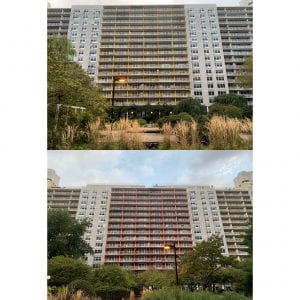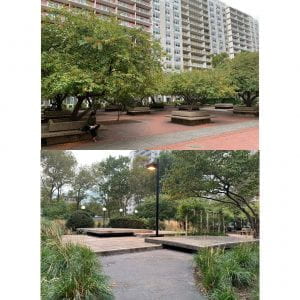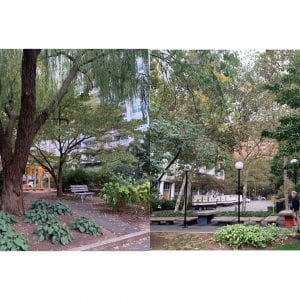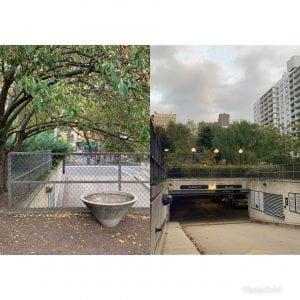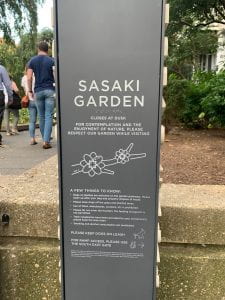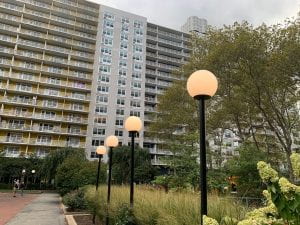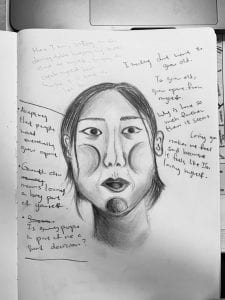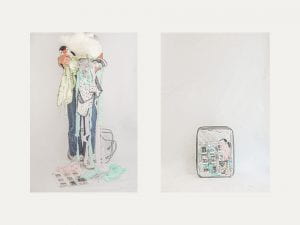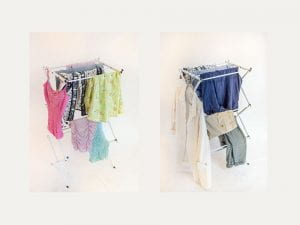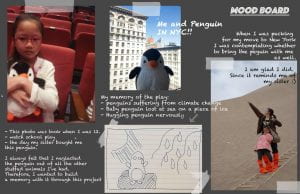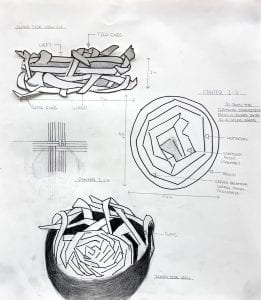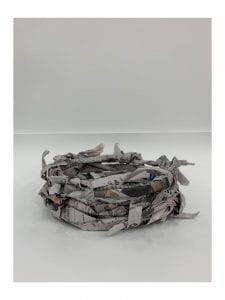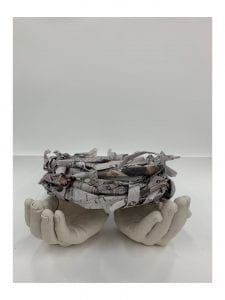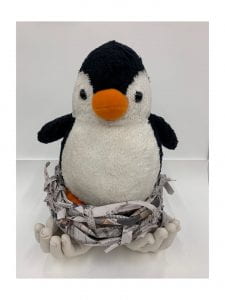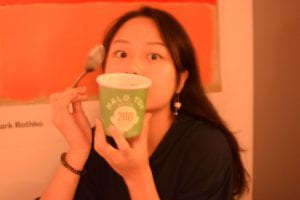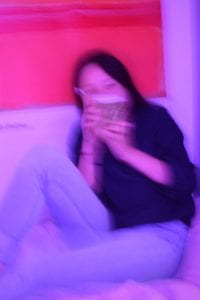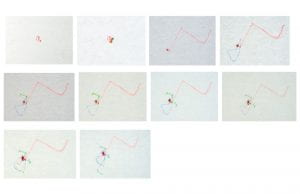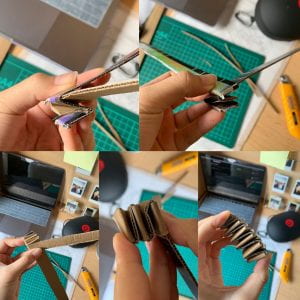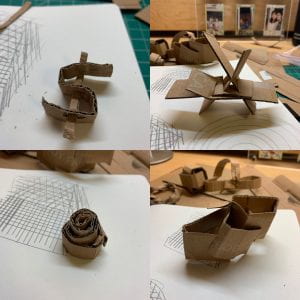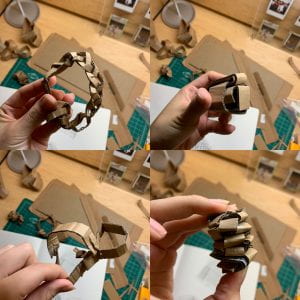Gina Beavers
The Life I Deserve (Ice-cream) 2014
Acrylic on canvas on board
Gina Beavers is an artist from New York City, She is famous for creating paintings and installations from photos of the Internet and social media and rendered in high Acrylic relief. In the exhibition – The Life I Deserve, she included paintings of “Instagram foods”, trending nail/ makeup tutorials and common Social media photos such as “beach/ fitness selfies”. Irony towards the current social media age is prevalent in this exhibition. The feeling of nauseate and discomfort was overwhelming after I attended the exhibition. After seeing a bacon version of starry night and #Foodporn images, I came to a realization that the images and photographs I’ve considered as satisfying are quite disturbing after all.
In her exhibition, I felt most resonated with her work – The Life I deserve (Ice-cream) 2014. The painting is one of the most common photos to be seen on social media. An ice-cream held up to the center of the photograph with the ice-cream in-focused and the subtle backdrop of the city. Illustrating the idea of what the current generation calls “Phone eats first”. While I was staring at the drawing, it made me rethink, why do I constantly have a natural inclination to take a photo every time I eat an Ice-cream? Instead of just sharing the joy of sweetness, is there an underlying factor for this action? Do I want my viewers to feel a certain way? Am I trying to implicate something about myself? And the answer is yes. All these little choices and actions I make on social media has a motive to make my viewers portray me a certain way. Posting a photo of me and my friends is trying to implicate that I’m sociable. Sharing current news or trends on social media is trying to implicate that I’m up to date. Uploading a photo of an ice-cream on my story is to implicate that I’m having fun and enjoying life.
Overall, I really enjoyed Gina Beavers exhibition. By transforming a photo on a 2D screen onto a large 3D painting allowed me to jump out and observe my actions on social media a little clearer.
Julie Becker
Transformation and Seduction1993/2000
video 4:36 minutes
Julie Becker is an artist from Hochschule der Künste, Berlin and she studied at the California Institute for the Arts in Valencia. Her works are mostly made of photography, video and installation. In her exhibition – I must create a masterpiece to pay the rent, she exhibited series of installations, sculptures, drawings, photographs, and videos with themes of fantasies, nightmares, dispossessions and the social imaginary of late capitalism. The theme dream is prevalent in her artworks. Especially in Transformation and Seduction. A 4:36 minute video of repeating clips of a girl wandering the woods (originally from Disney’s The Gnome-Mobile and the Mary Poppins kids,” a sad showbiz tale) with a narration of a poem or text in the background. The video is confusing. The narration seemed to be a description of her own dreams. In the video she said“…as if I were looking for, and finding (and still doubting a little) proof that I was I, and that I was really in the forest, searching for one particular common girl” In my perspective, the girl in the video is her.
The way Julie Becker constructed the piece really inspired me. I like to way she brought together different clips from various movies and created her own story. Also, I found It fascinating how linear the clip seemed even though it was just repeating footage of the same girl wondering the same area in the forest. The faded, desaturated and shadowed filter suits the overall aesthetic of the film. Demonstrating qualities of dream and fantasy. Although it was quite confusing, I really enjoyed the piece and her whole exhibition as well.
Simone Fattal
They Found Weapons of Mass Destruction 2016
Collage
Simone Fattal is a Lebanese- American visual artist. In her exhibition – Works and Days, her work consisted mediums such as sculptures, paintings, watercolor, and colleges. Exploring themes of displacement, politics of archeology and excavation, she created 200 pieces of work over the last 50 years. And hasn’t stopped ever since. “They Found Weapons of Mass Destruction” stood out to me in her exhibition. When I first looked at the work I thought it was a college of just all the places she has been to. But as I look deeper I saw a lot of different historical artifacts such as a sculpture of Alexander the great and written Farsi representing regions from both Europe and the Middle East. It seemed as if it was illustrating a story about a period of time, a war between two places. And this college serves as a memoir. Simone’s way of recording an event that happened during her times.
I believe college is a great medium to create a memoir since it is very straight forward to understand. Although I might not have gotten the full understanding of what Simone’s art piece meant, but by finding matching images and themes, I have learned to figure the general concept of the collage. Moreover, since it was written during her time, Fattal presents a specific insight into the event with a personal perspective. She presents photos directly linked to France showcasing her deep connection to the French Culture. Furthermore, being present at that time period, Fattal can direct the audience’s attention away from the media presented to every average individual and instead to personal documents such as manuscripts and maps. Simultaneously, by presenting varied media such as ceramics, she gives us an overall presentation to the context making it relatable for a larger audience. Additionally, she includes snapshots which transports the viewer back to the Middle East.
